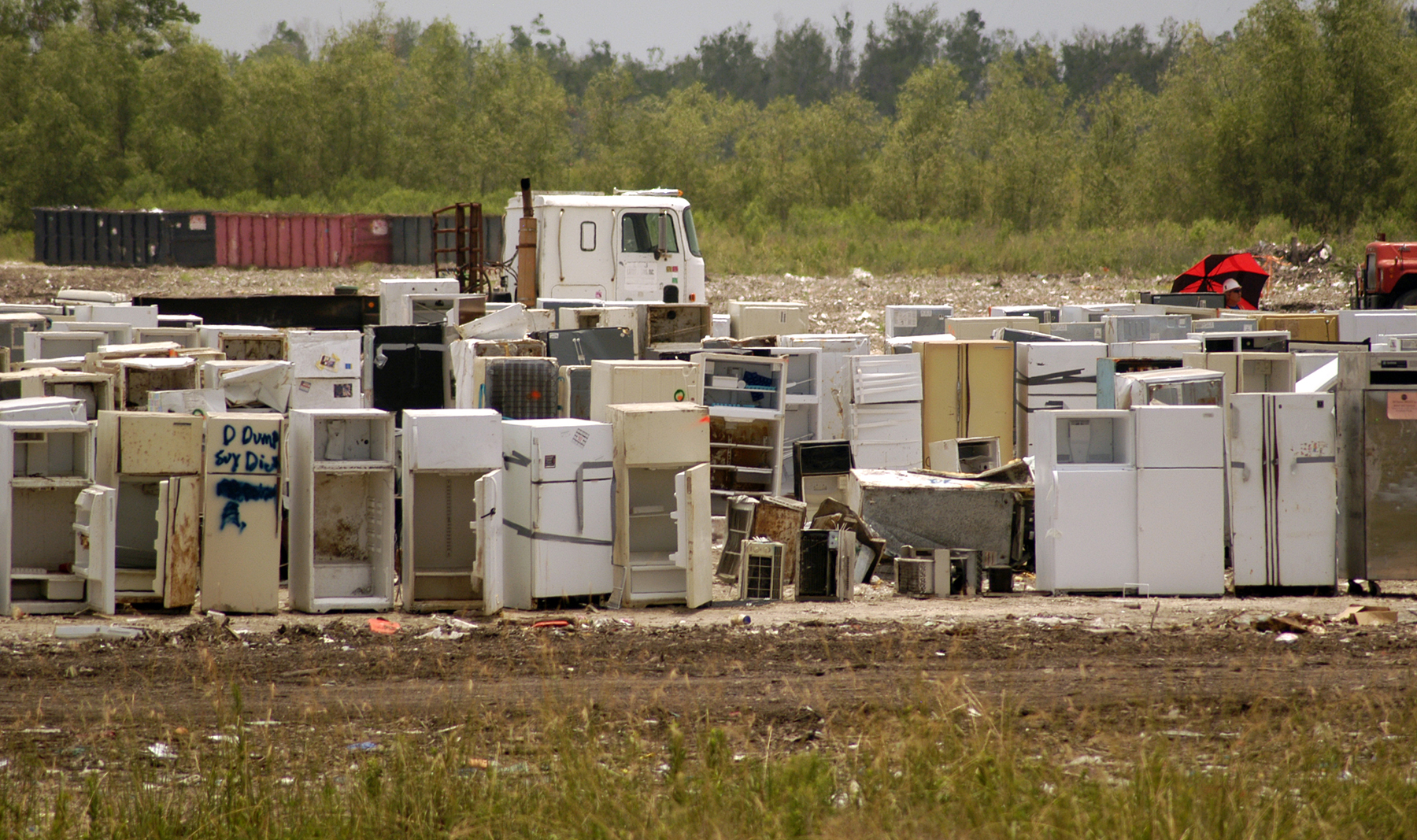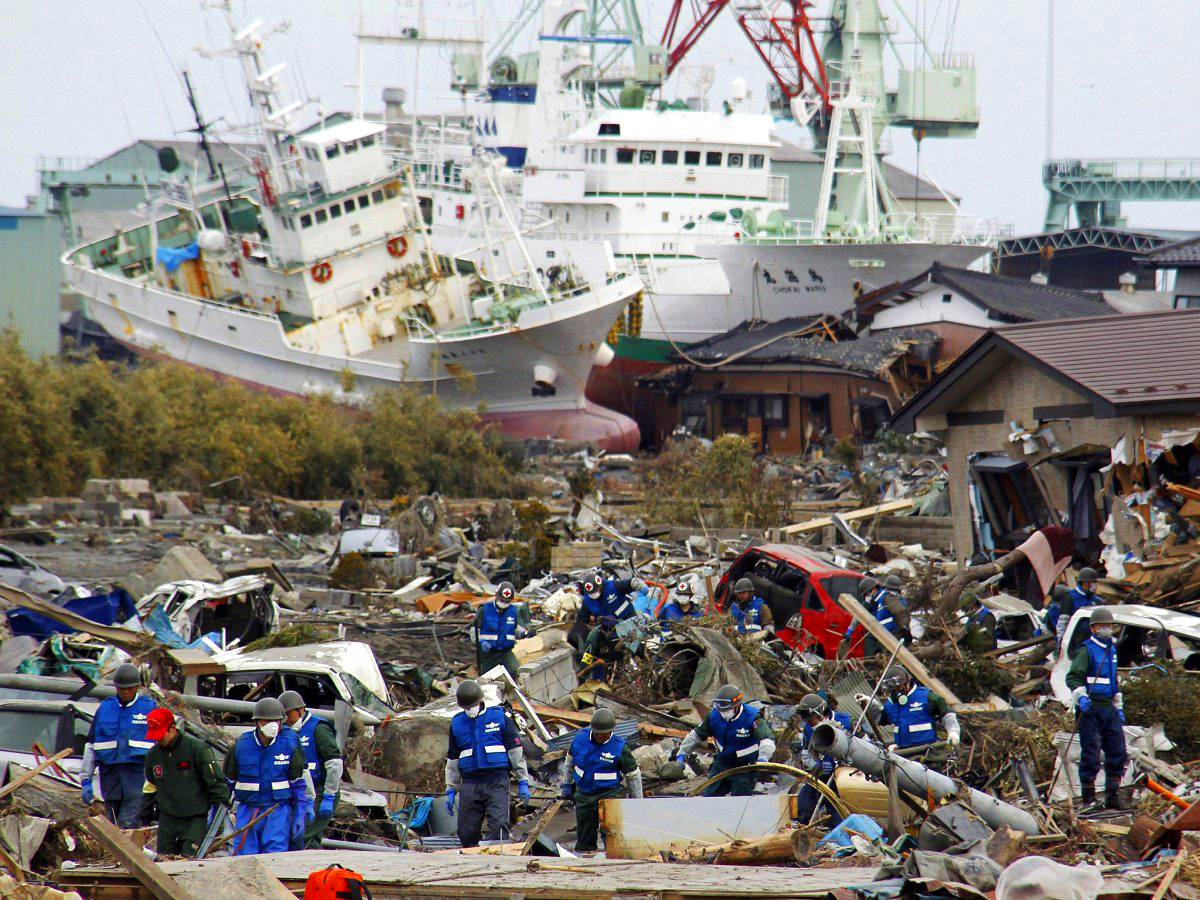 U.S. Department of Agriculture via Flickr
U.S. Department of Agriculture via FlickrWhen the smoke clears, the waters recede, or the shaking stops, a palpable relief washes over communities struck by the natural hazards. But a new reality quickly sets in: dealing with the mounds of debris left after the catastrophe.
After a natural disaster, waste disposal efforts can be stymied. Roadways and infrastructure can be destroyed or unreachable, creating delays to recovery. The resilience of a community is directly related to how long it takes to remove debris after a disaster.
Further reading:
- Community resilience starts with people
- After the wildfires: Rebuilding and protecting Los Angeles
- Engineers share critical safety tips for helping at natural disaster sites
In a new case study, researchers examined the linkage between the waste disposal system and the road network system in the coastal community of Mie Prefecture, Japan. In particular, the team focused on how the interactions between WDS and RNS affected the recovery time following an earthquake-tsunami multihazard.
The new approach could be used globally – with site-specific conditions – to estimate a community’s resilience after experiencing multiple natural disasters.
The aftermath of cascading hazards
In the contiguous U.S., nearly 60% of structures are at risk of experiencing at least one natural hazard. In 2024, researchers found that nearly 20% of recorded disasters were multihazard events – and disproportionately, these cascading events accounted for nearly two-thirds of the estimated economic losses.
These cascading hazards can pile up debris and demolish infrastructure. In 2011, the Great East Japan earthquake (also known as the Tohoku earthquake) hit the island with a double punch: a high-magnitude earthquake followed by a devastating tsunami. Along the Pacific coastal regions, about 23 million tons of disaster waste was left in the wake of these events. In addition, roads and bridges were destroyed, delaying cleanup efforts.
“Disaster waste has hindered post-disaster recovery processes during past disasters, including the 2011 Great (East) Japan earthquake and the 2005 Hurricane Katrina in the United States,” said Mitsuyoshi Akiyama, Ph.D., a civil engineering professor at Waseda University in Japan and co-author of the paper. Because Japan lies near the Nankai Trough, an active plate boundary, he noted more earthquake-tsunami hazards are bound to repeat.
Cascading hazards can also create cascading damages.
“The structures and infrastructure system associated with the disposal and transportation of disaster waste, such as processing facilities and bridges in road networks, are not operational after the event,” Akiyama said. “This impact must be considered to develop reliable disaster waste management for resilience enhancement.”
And it’s not just earthquakes that can create breathtaking amounts of waste.
“I visited New Orleans after Katrina,” said James H. Lambert, Ph.D., P.E., BC.WRE, F.ASCE, a systems engineer and risk analyst and the Janet Scott Hamilton and John Downman Hamilton Professor at the University of Virginia. Lambert was not involved in the study.
“There were city blocks as tall as buildings with the debris,” he recalled. He added that there are challenges with both the sheer amount of waste as well as the processing. “In some cases, there's toxicity issues – you don’t want to take action that makes environmental damage worse.”
Hurricane Katrina produced an estimated 30 million tons of debris scattered across New Orleans.
 Douglas Sprott via Flickr
Douglas Sprott via FlickrThe resilience of a community is directly related to how quickly waste can be removed from the area and repairs can begin. Akiyama said that previous studies focused on how long it took to remove disaster waste after a natural event, ignoring the damage to the infrastructure system.
“In contrast, this research presents a probabilistic resilience-based approach, considering the recovery from ground-motion- and tsunami-induced damage to processing facilities and bridge networks,” he explained. “The developed method incorporates the effects of the cascading multiple hazards on not only the capacity of processing facilities but also the time necessary to transport disaster waste to the processing facilities, i.e., the interdependency between the waste disposal system and road network system.”
Determining resilience
To determine how the WDS and RNS were linked, the researchers first collected data about the area’s buildings, waste disposal system, and roadways. They also considered previous seismic and tsunami hazard assessments and the vulnerability of buildings, waste processing facilities, and infrastructure.
Using estimates of the amount of disaster waste and functionality losses in the WDS and RNS systems, Akiyama and his colleagues used “Monte Carlo simulations” to measure the ability of a coastal community to recover – in other words, they calculated their resilience.
Akiyama pointed to an illustrative example from the team’s work: a hypothetical, 990-square-kilometer coastal community in Mie Prefecture that was vulnerable to seismic shaking from a Nankai Trough earthquake.
“The illustrative example demonstrates that the disaster waste disposal time is significantly affected by the trajectory associated with the functionality of the RNS,” he said. “Retrofitting bridges in the RNS and sparse placement of processing facilities in the WDS before the event can reduce the disaster waste disposal time.”
This work can help develop pre- and postdisaster strategies for enhancing resilience in coastal communities and beyond, Akiyama said. “The methodology can be expanded to estimate disaster waste disposal times caused by various multiple hazards, including rainfall, floods, and earthquake-triggered landslides.”
“This kind of paper helps the imagination to be ready. The scenario that’s contemplated in this paper, for example, is not the one that’s going to occur,” Lambert said, adding that each disaster is unique and that all sectors of infrastructure depend mutually on one another.
Lambert pointed out that resilience responses after disasters are multifaceted. Plans should be in place to assess the condition of the roads, get fuel for the trucks, and ensure that systems are in place to pay recovery contractors.
He noted that it is important to remain flexible when considering disaster recovery solutions, adding that “there’s always the limitation of risk analysis that our imaginations have failed.”



